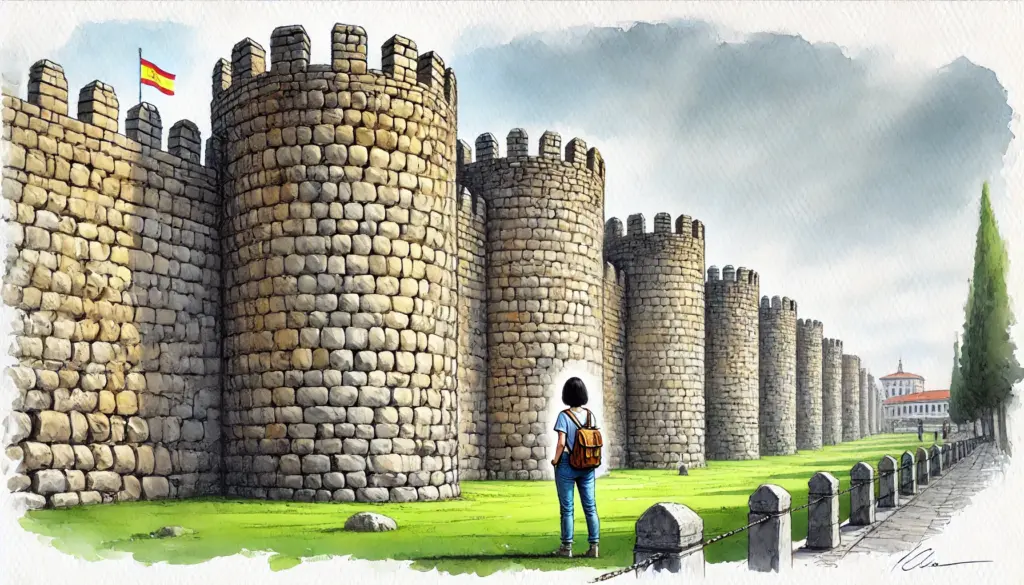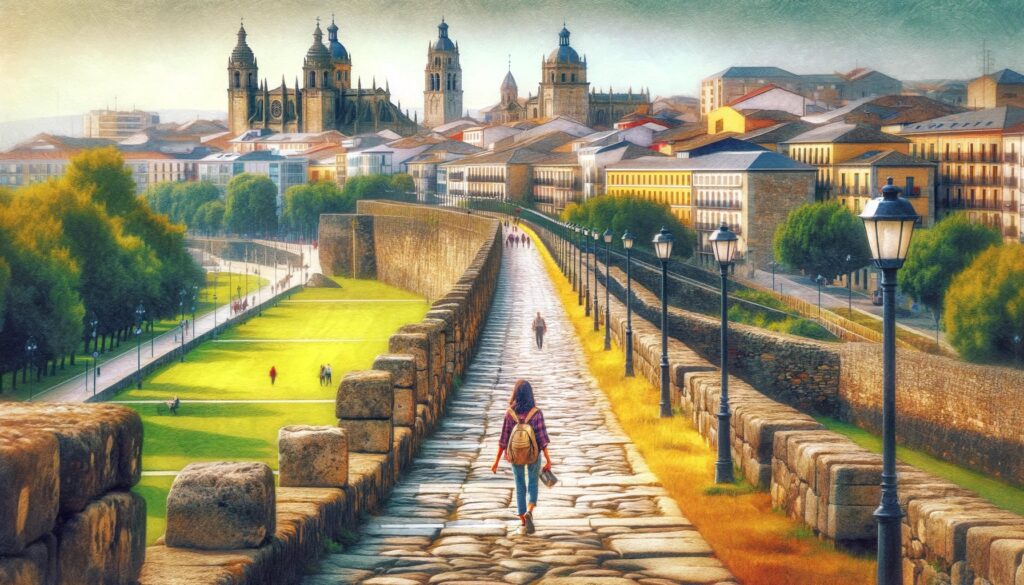ChatGPT:
Lugo is a city located in the Galicia region of northwestern Spain. It’s the capital of the province of the same name and is known for its rich history and well-preserved Roman architecture. The most notable landmark in Lugo is the Roman wall that encircles the old town, which is a UNESCO World Heritage Site. This wall is remarkably intact and stretches over 2 kilometers, featuring several gates and towers.
Lugo is also known for its beautiful cathedral, the Cathedral of Santa María, which combines Romanesque, Gothic, Baroque, and Neoclassical styles. The city’s history dates back to Roman times, and it has a rich cultural heritage that includes festivals, traditional Galician cuisine, and a vibrant local community.
The area surrounding Lugo is characterized by lush green landscapes, rolling hills, and numerous rivers, making it a scenic destination for nature lovers. The city’s climate is generally mild, with cooler, wet winters and warm, dry summers.
Overall, Lugo is a charming city that offers a blend of historical architecture, cultural experiences, and natural beauty.
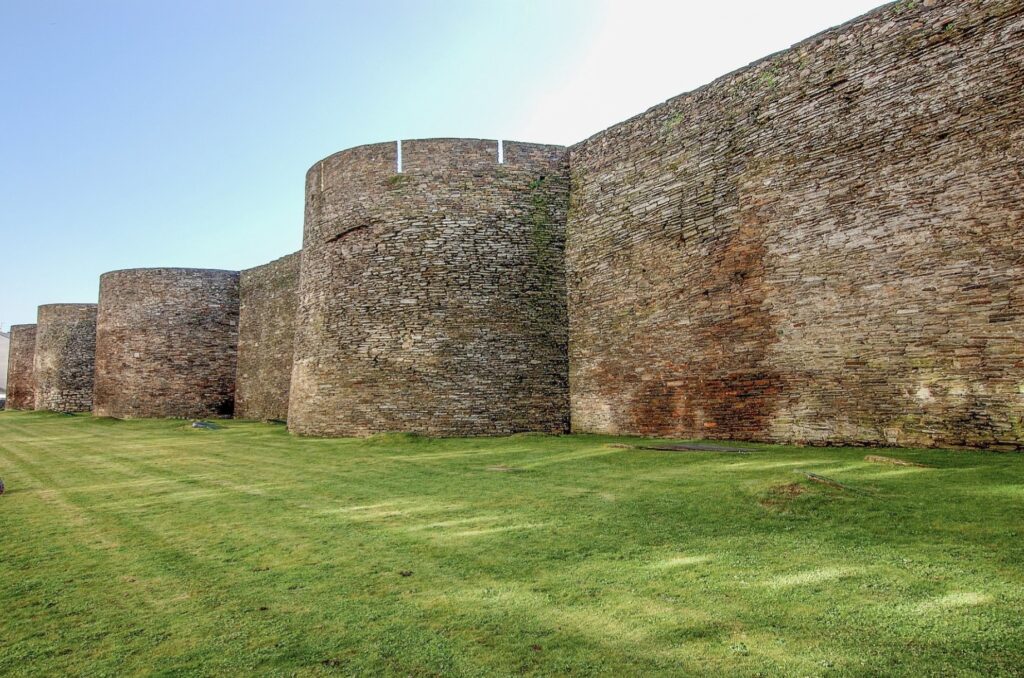
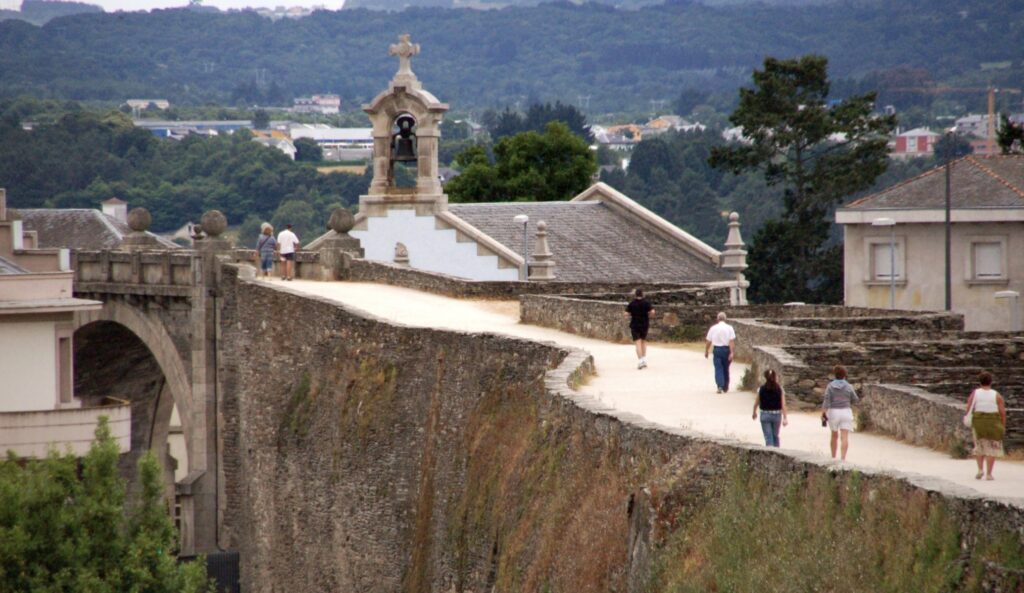
Lugo, one of the oldest cities in Galicia, Spain, has a rich history that dates back to ancient times. Here’s an overview of its origin, history, and development:
Origin and Roman Period
- Foundation: Lugo was originally founded by the Romans around 13-15 BCE, during the time of Emperor Augustus. The city was known as Lucus Augusti, named after the Roman emperor and derived from the Latin word lucus, meaning sacred forest. It served as a strategic military and administrative center for the Romans in northwestern Hispania (the Roman name for the Iberian Peninsula).
- Roman Wall: One of the most significant features of Lugo is its Roman wall, constructed in the late 3rd century and early 4th century. This wall, which still encircles the city’s historic center, is remarkably well-preserved and is a UNESCO World Heritage Site. The wall was built to protect the city from invasions and is an example of Roman military engineering, with a circuit of over 2 kilometers and 71 towers.
- Urban Development: During the Roman period, Lugo developed as a major urban center with significant infrastructure, including baths, a forum, an amphitheater, and an aqueduct. The city’s layout followed the typical Roman grid pattern.
Medieval Period
- Visigothic and Suebi Control: After the fall of the Western Roman Empire, Lugo came under the control of the Suebi and later the Visigoths. This period saw a decline in the city’s prominence but it remained an important religious and administrative center.
- Christian Influence: Lugo became a significant religious hub with the establishment of the Diocese of Lugo, one of the oldest in Spain. The city saw the construction of several churches and monasteries, and the Lugo Cathedral (Santa María) was founded in the 12th century, incorporating various architectural styles over time.
- Medieval Conflicts: Lugo experienced conflicts during the medieval period, including Viking raids and struggles between local nobility and the crown. Despite these challenges, the city continued to develop as a key administrative and religious center in Galicia.
Modern and Contemporary Development
- Economic Changes: In the modern era, Lugo saw economic changes with the decline of traditional industries and the rise of new economic activities, including agriculture, trade, and services. The city’s strategic location continued to play a role in its economic development.
- Cultural and Architectural Heritage: Lugo has preserved much of its historical and architectural heritage, including the Roman wall, medieval churches, and other historic buildings. The city has also embraced its cultural identity, with traditional festivals and events celebrating its Roman and medieval past.
- Urban Expansion and Modernization: In the 19th and 20th centuries, Lugo expanded beyond its ancient walls, with new neighborhoods and infrastructure developments. The city has modernized while maintaining its historical character, attracting tourists interested in its rich cultural heritage.
- UNESCO World Heritage Site: The Roman wall of Lugo was declared a UNESCO World Heritage Site in 2000, recognizing its historical significance and remarkable state of preservation.
Today, Lugo is known for its unique blend of Roman, medieval, and modern elements. The city remains an important cultural and administrative center in Galicia, offering a rich historical experience and vibrant local culture.
Lugo, with its rich history and cultural heritage, boasts numerous historical monuments and tourist attractions. Here are some of the most notable ones:
Historical Monuments
- Roman Wall (Muralla Romana de Lugo):
- A UNESCO World Heritage Site, this well-preserved Roman wall encircles the historic center of Lugo. It was built in the late 3rd and early 4th centuries and is notable for its length of over 2 kilometers and its 71 towers.
- Lugo Cathedral (Catedral de Santa María):
- A stunning example of Romanesque architecture with later Gothic, Baroque, and Neoclassical additions. The cathedral dates back to the 12th century and houses the famous image of the Virgin of the Big Eye (Virgen de los Ojos Grandes).
- Bishop’s Palace (Palacio Episcopal):
- Located near the cathedral, this historic building has served as the residence of the bishops of Lugo. It features architectural elements from various periods, including the Gothic and Renaissance styles.
- Church of San Pedro:
- A former Benedictine monastery, this church showcases a blend of Romanesque and Gothic styles. It is known for its impressive cloister and beautiful chapels.
- House of Mosaics (Casa de los Mosaicos):
- A museum and archaeological site where visitors can see the remains of a Roman villa, including well-preserved mosaics depicting mythological scenes.
- Roman Baths:
- Located near the Miño River, these ancient thermal baths offer insight into the daily life of Roman citizens in Lugo. The site includes well-preserved remains of the baths and associated structures.
- Convent and Church of St. Francis (Convento e Igrexa de San Francisco):
- A medieval convent and church featuring Gothic architecture and an impressive cloister. The site is now part of the Provincial Museum of Lugo.
Tourist Attractions
- Praza Maior (Main Square):
- The heart of Lugo’s old town, this vibrant square is surrounded by historic buildings, cafes, and shops. It’s a great place to enjoy the local atmosphere.
- Provincial Museum of Lugo (Museo Provincial de Lugo):
- Housed in the former convent of St. Francis, this museum showcases a wide range of exhibits, including archaeological finds, religious art, and ethnographic collections.
- Parque Rosalía de Castro:
- A large and beautiful park offering scenic views of the city and the surrounding landscape. It features gardens, ponds, and walking paths, making it a popular spot for relaxation.
- Arde Lucus Festival:
- An annual event celebrating Lugo’s Roman heritage. The festival includes reenactments, parades, and various cultural activities, attracting visitors from around the region.
- Puente Romano (Roman Bridge):
- An ancient bridge spanning the Miño River, offering picturesque views and a connection to the historic part of the city.
- Miño River Walks:
- The riverside area offers lovely walking and cycling paths, with scenic views of the Miño River and surrounding nature.
- Casa dos Mosaicos (House of Mosaics):
- A site where visitors can see preserved Roman mosaics and learn about ancient domestic life in Lugo.
These monuments and attractions make Lugo a fascinating destination for those interested in history, culture, and natural beauty.
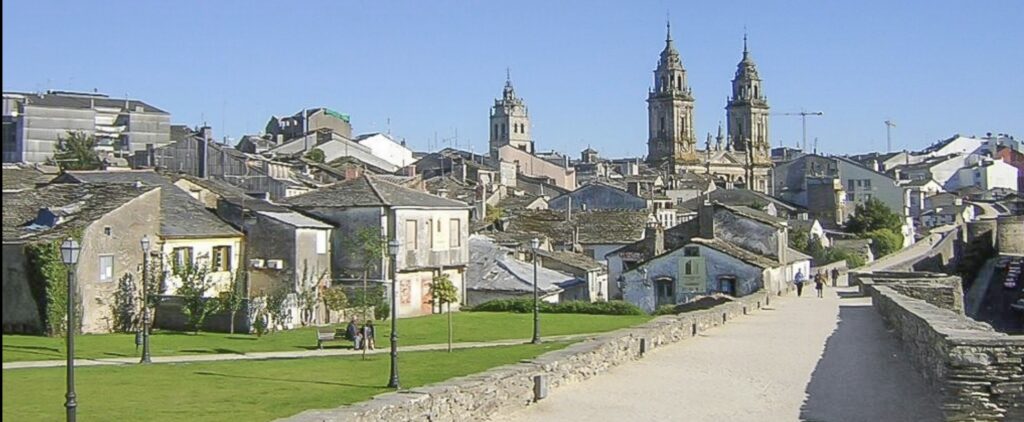
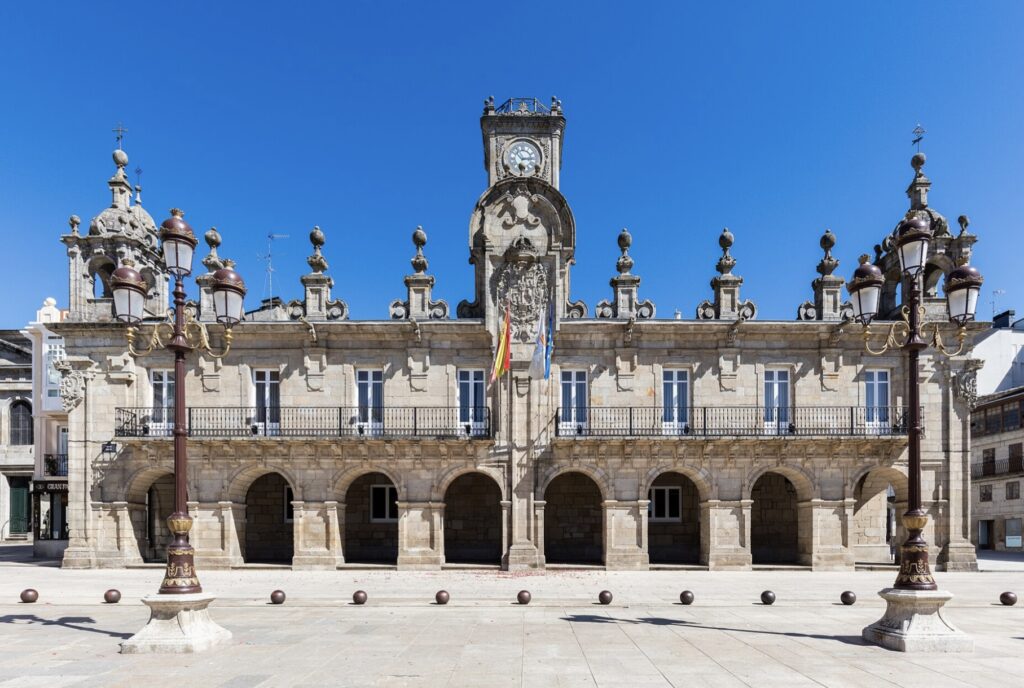
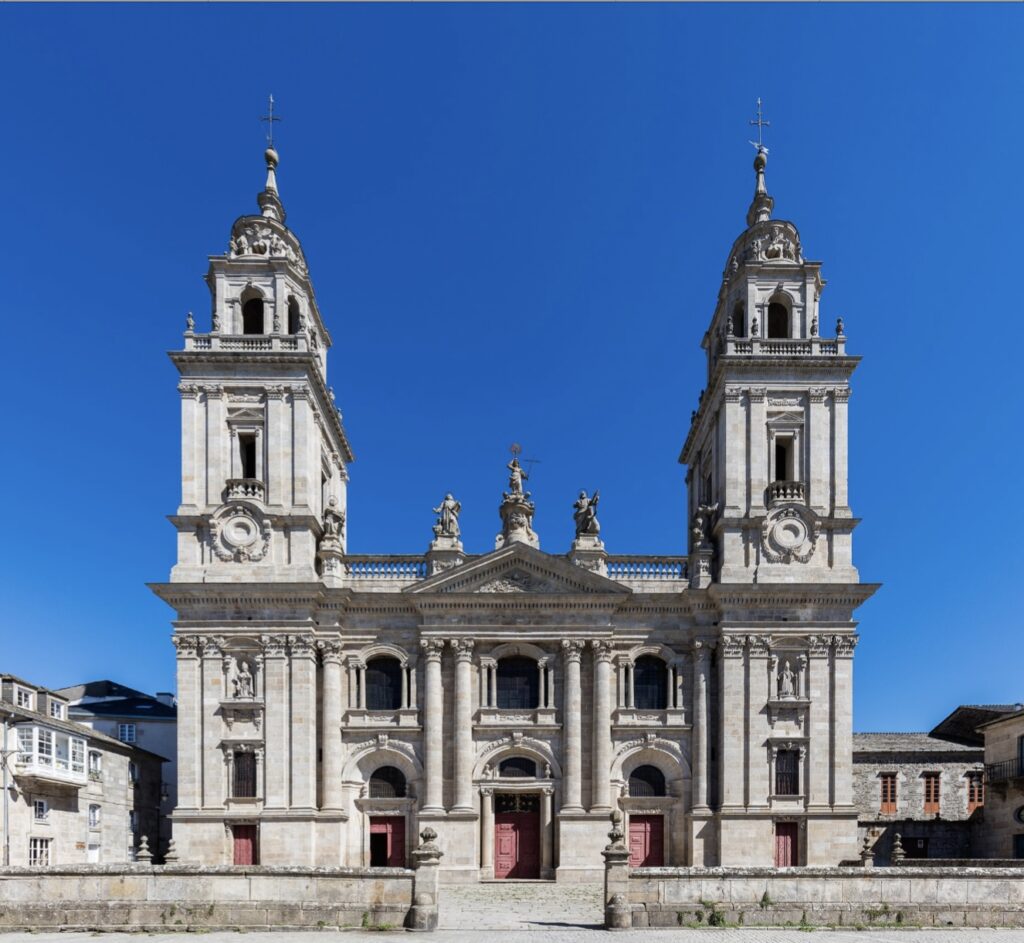
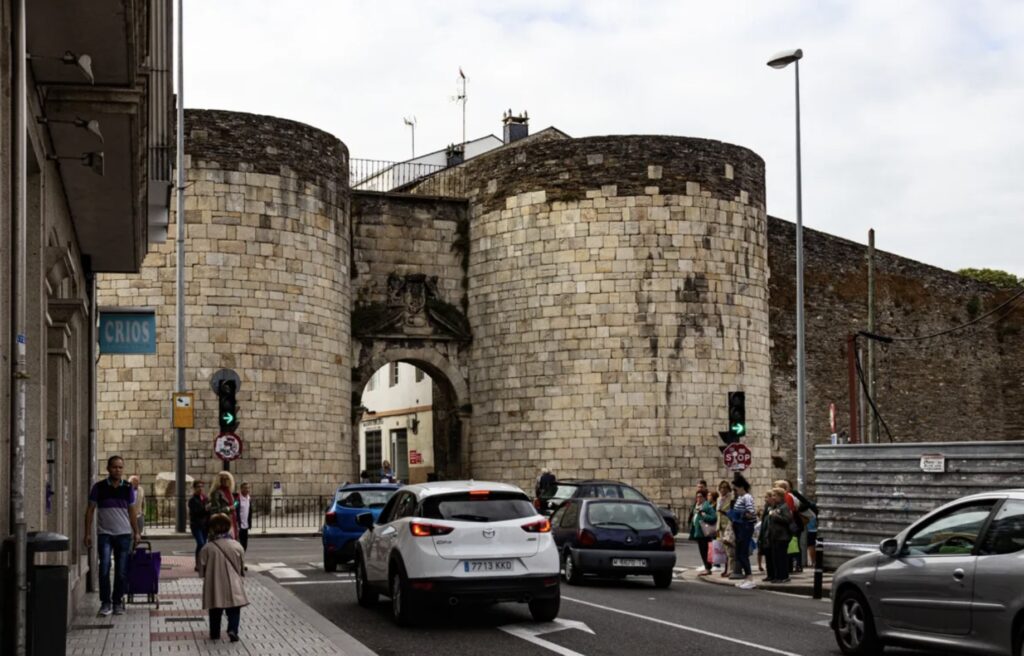

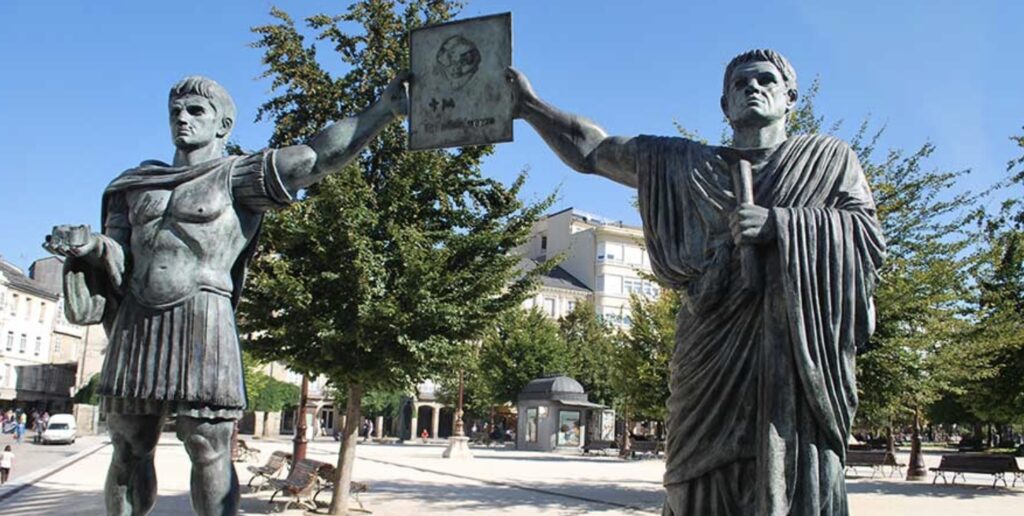
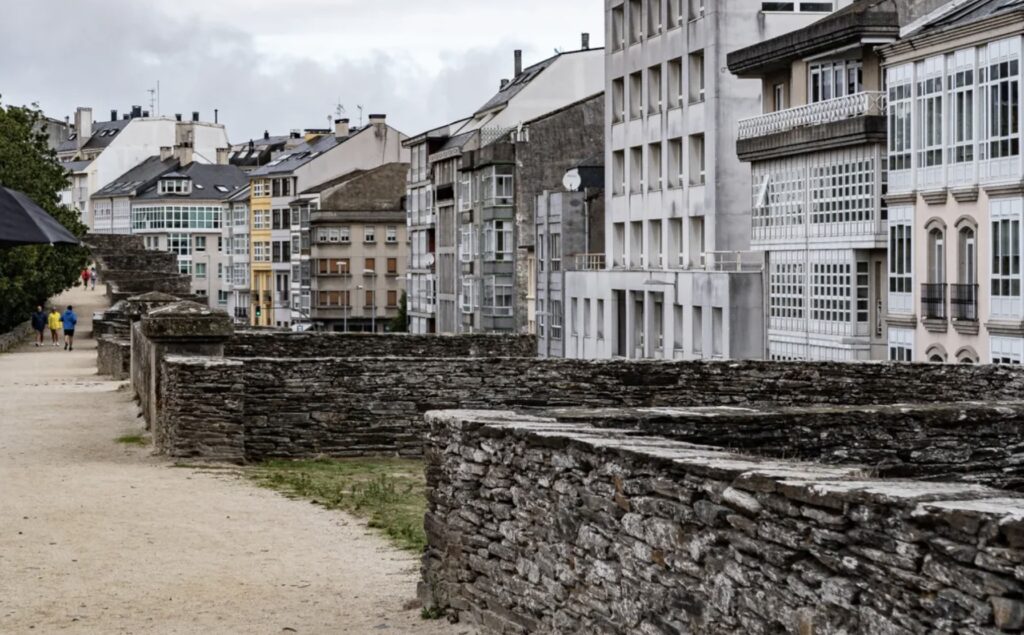
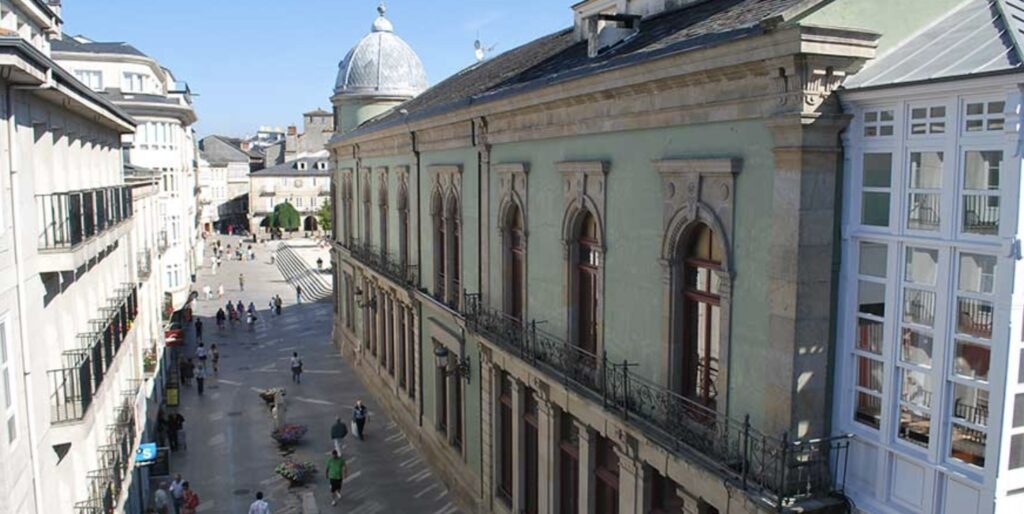
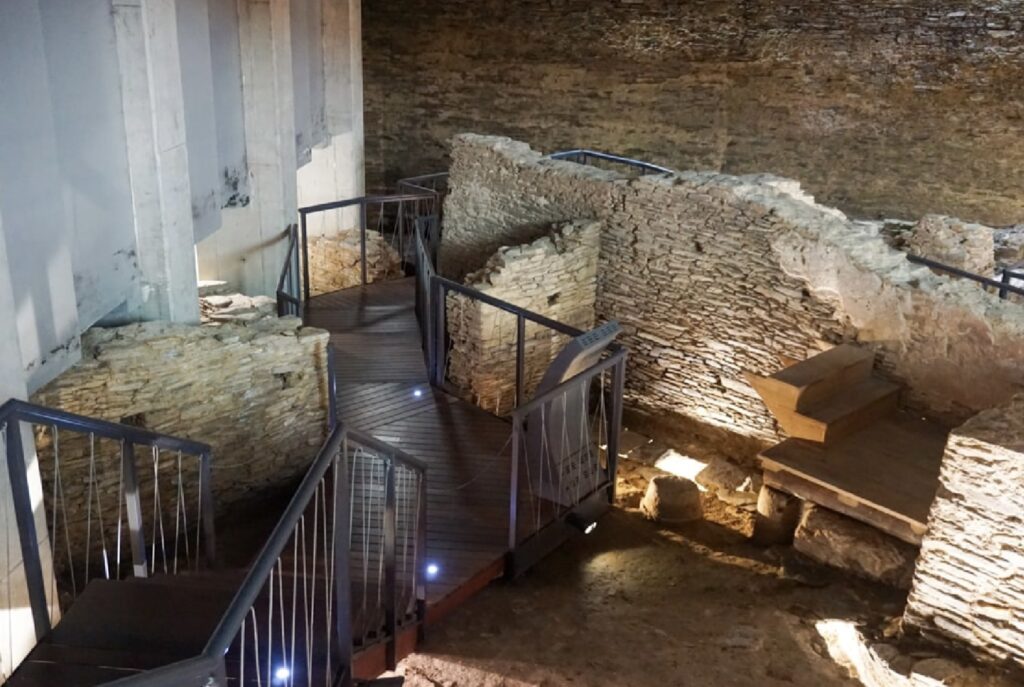
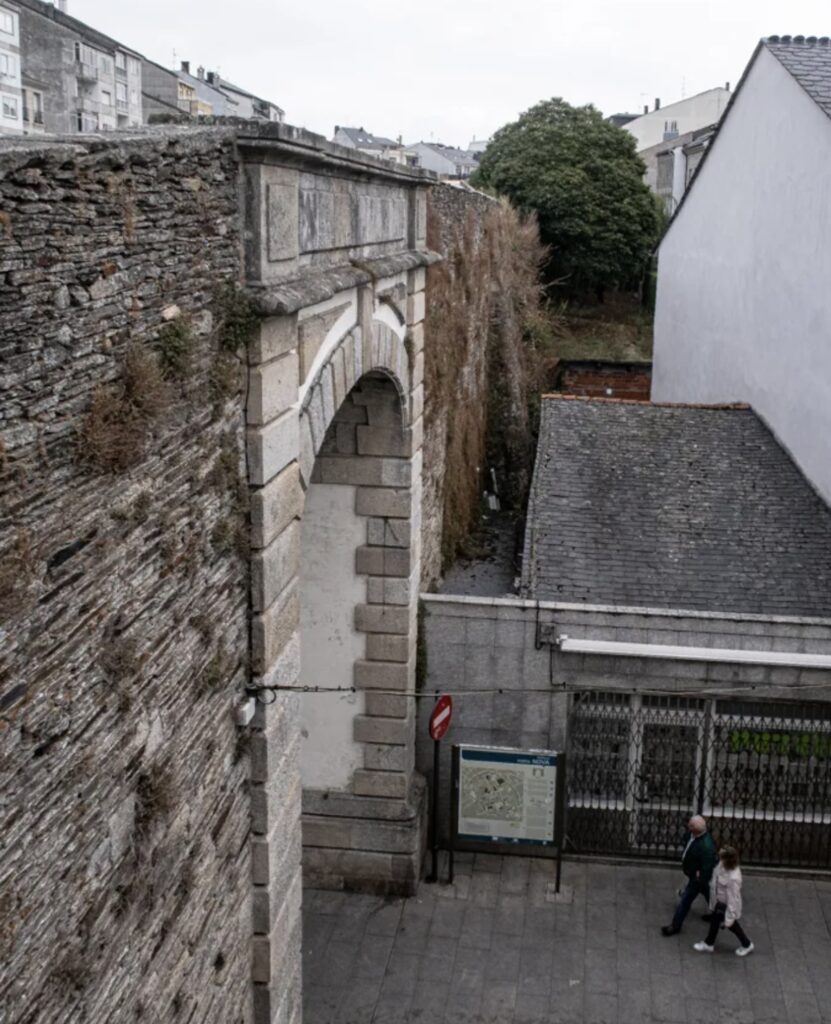
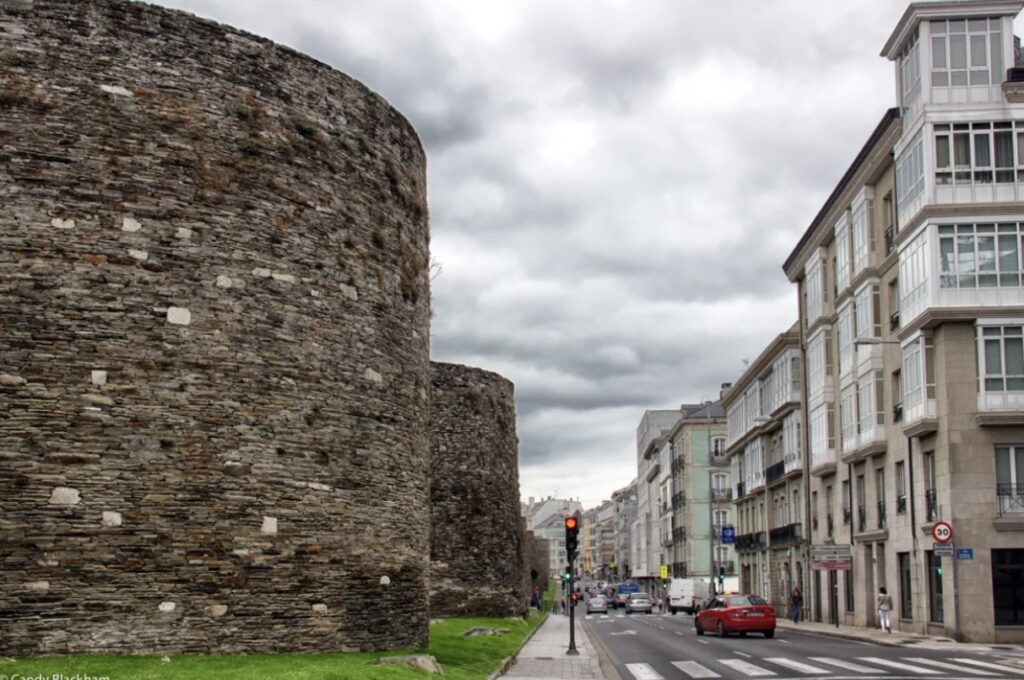
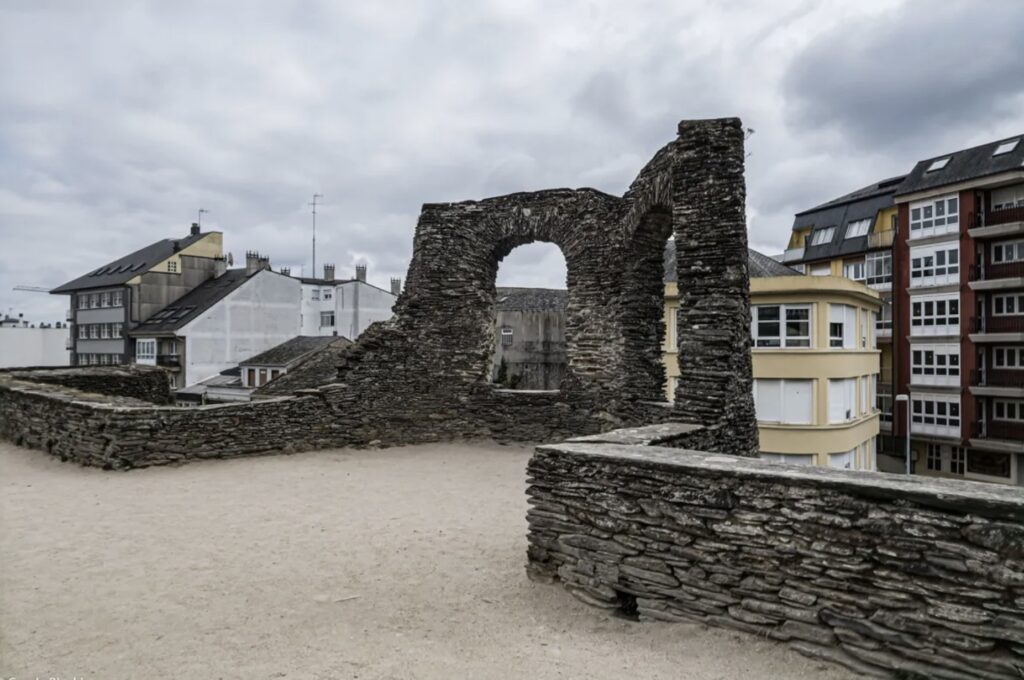
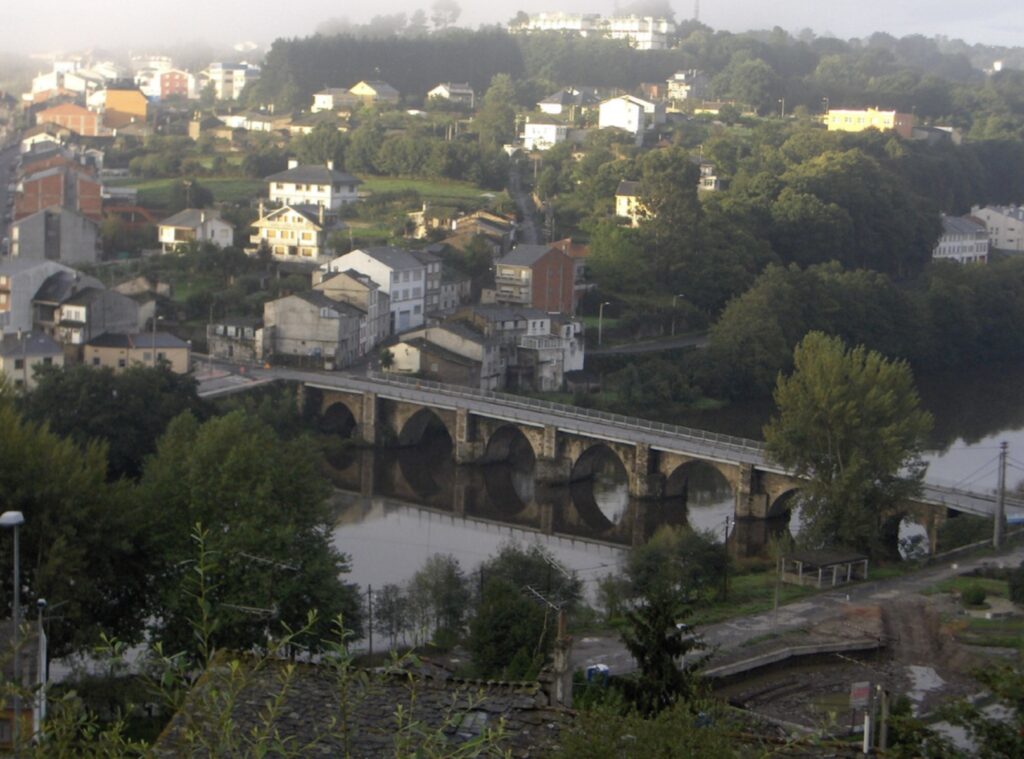
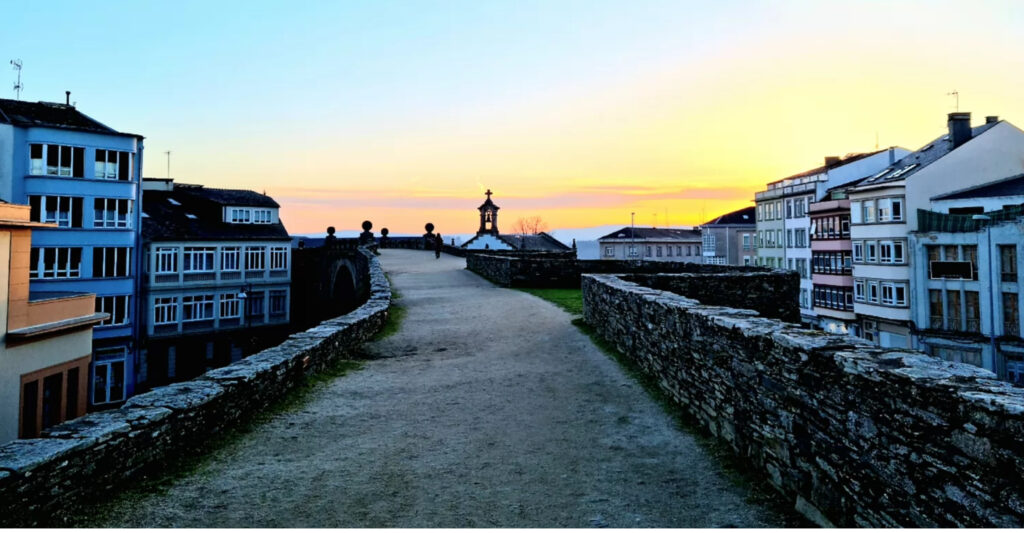
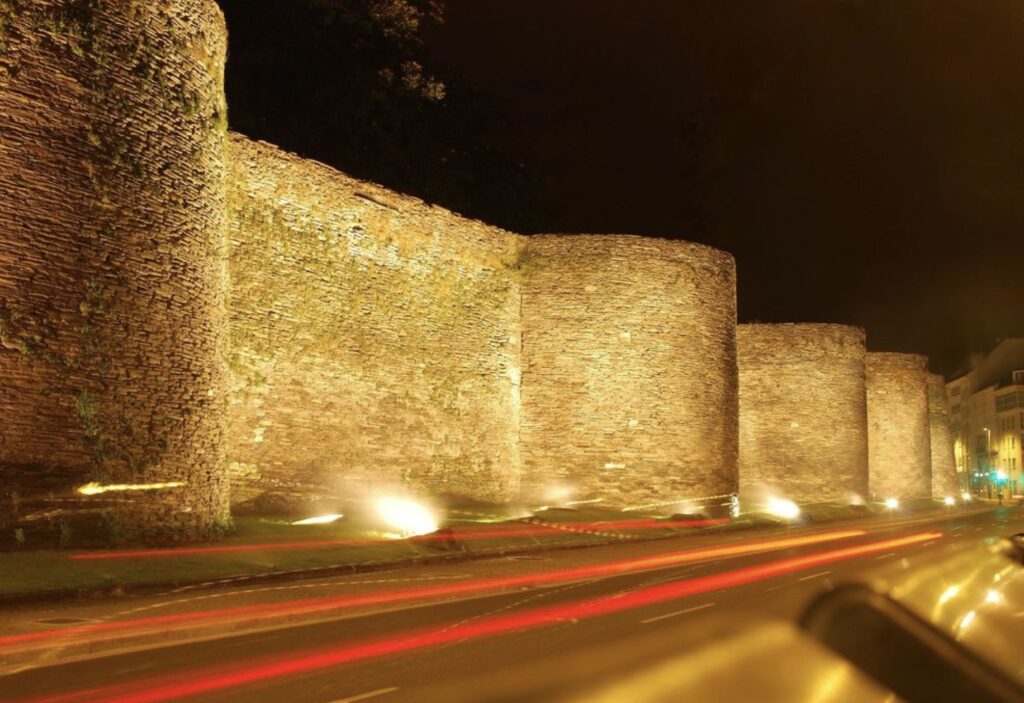
For a history buff visiting Lugo, a one-day itinerary can be designed to explore the city’s rich historical sites and cultural landmarks. Here’s a suggested itinerary:
Morning
- Roman Wall and Porta Miñá (8:30 AM – 10:00 AM)
- Start your day with a walk along the Roman Wall, Lugo’s most famous historical landmark. Begin at the Porta Miñá (Miñá Gate), one of the ancient gates, and enjoy a full circuit around the wall. This walk offers panoramic views of the city and insights into Roman military architecture.
- Lugo Cathedral (10:00 AM – 11:30 AM)
- After the wall, visit the nearby Lugo Cathedral (Catedral de Santa María). Take time to explore the interior, admiring the blend of Romanesque, Gothic, Baroque, and Neoclassical styles. Don’t miss the Chapel of the Holy Sacrament and the cloister.
- House of Mosaics (Casa de los Mosaicos) (11:30 AM – 12:30 PM)
- Walk to the House of Mosaics, a Roman villa with well-preserved mosaics depicting mythological scenes. This site provides a glimpse into ancient domestic life and Roman art.
Lunch Break (12:30 PM – 1:30 PM)
- Enjoy a traditional Galician lunch in the historic center. Try local dishes such as pulpo a la gallega (Galician-style octopus) and empanada gallega.
Afternoon
- Provincial Museum of Lugo (Museo Provincial de Lugo) (1:30 PM – 3:00 PM)
- Visit the Provincial Museum housed in the Convent of St. Francis. Explore its extensive collection of artifacts, including Roman and medieval exhibits, religious art, and ethnographic displays.
- Roman Baths (3:00 PM – 4:00 PM)
- Head to the Roman Baths near the Miño River. These ancient thermal baths offer a fascinating look into the leisure practices of the Romans in Lugo.
- Praza Maior and Old Town Exploration (4:00 PM – 5:00 PM)
- Stroll through the Praza Maior, the vibrant main square surrounded by historic buildings, cafes, and shops. Explore the narrow streets of the old town, taking in the architecture and atmosphere.
Evening
- Parque Rosalía de Castro (5:00 PM – 6:00 PM)
- End your day with a relaxing walk in Parque Rosalía de Castro. Enjoy the gardens, ponds, and scenic views of the city and the Miño River.
- Dinner in the Old Town (6:00 PM – 7:30 PM)
- Have dinner at a local restaurant, sampling more Galician cuisine. Consider dishes like caldo gallego (Galician soup) and local seafood.
Optional Evening Activity
- Arde Lucus Festival Events (if visiting during festival time)
- If your visit coincides with the Arde Lucus Festival, participate in the evening events and reenactments celebrating Lugo’s Roman heritage.
This itinerary offers a comprehensive exploration of Lugo’s historical and cultural landmarks, providing a rich experience for any history enthusiast.
